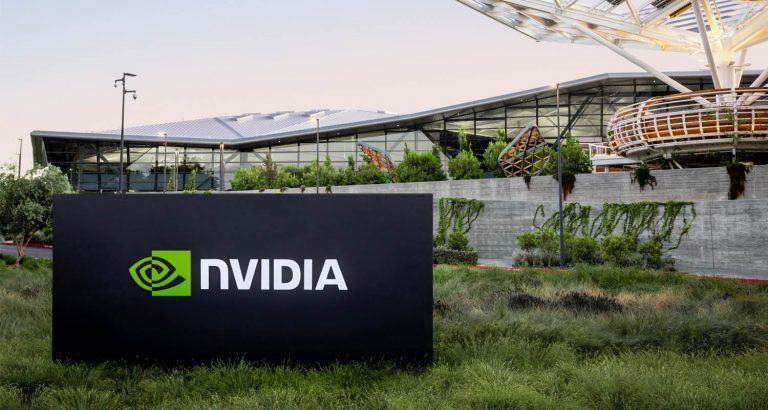adverts
Nvidia’s stunning rise is captivating the stock market and driving the S&P 500 Index to new highs. But it also raises cautionary reminders of another investor darling that not too long ago soared on dreams of a technological transformation, only to tumble back to earth when those hopes turned to disappointment.
Of course, that stock belongs to Tesla, which sparked its own mania in 2017 as investors bet that electric vehicles were going to take over the world. Back then, Elon Musk’s company was a phenomenon as it blew past established car makers like General Motors and Ford in market capitalisation to become America’s biggest car manufacturer. Some analysts were looking beyond the industry and calling it “the next Apple”.
Those days are in the rear-view mirror now. Tesla shares are down more than 50% from their 2021 peak, and other EV stocks that raced higher with it are shadows of their former selves. All of which should be sobering for Nvidia investors who see the stock as a limitless bet on an AI future.
adverts
“We have seen time and again that when investors fall in love with the idea of the technology innovation du jour, logic takes a back seat,” Adam Sarhan, founder and CEO of 50 Park Investments, said in an interview. “And when emotion takes over, sky is the limit.”
Of course, there are plenty of differences between Nvidia and Tesla, from the products they make to the personalities of the men that run the companies. But the parallels are striking.
Nvidia’s rise from niche chip maker to one of the biggest companies in the world is based on the premise that its phenomenal sales growth over the past year has staying power. Tesla’s big breakout rally, which occurred in 2020 and put its valuation well over US$1.2-trillion, was pinned on the assumption that EVs would be adopted widely and quickly, and that it would be the company to dominate that market.
Interrupted by reality
But reality has interrupted that story. Demand for EVs is slowing as the wave of enthusiastic first adopters have already bought, and more price-conscious, change-averse consumers are taking longer than expected to convert to a new technology. As a result, Tesla is down 31% from its recent high last July and is one of the biggest percentage decliners in the Nasdaq 100 Index this year.
“There’s all this potential about the driverless car, the Cybertruck and the stock is getting hit. Why? They are losing market share, and they are losing margins. In the tech world, that is the kiss of death,” said Sameer Bhasin, principal at Value Point Capital.
For Nvidia, it’s too early in the hype cycle for any signs of a slowdown. The Santa Clara, California-based company has delivered blowout results for four consecutive quarters, fuelled by what appears to be insatiable demand for its chips used to train large language models that power AI applications like OpenAI’s ChatGPT.
After more than tripling last year, the stock in 2024 is again the best performer in the S&P 500 Index, with a 66% advance. Its market value of more than $2-trillion trails only two US companies — Apple and Microsoft.
The talk of broad-based use of AI across industries and businesses brings to mind the excitement around the internet and the years leading into the dot-com bubble. But unlike that era, when internet companies were being valued on new metrics like “clicks” while bleeding cash, Nvidia is pumping out massive profits. Net income jumped more than 500% to nearly $30-billion last year and is projected to double in the current year.
Those big profits, and the company’s ability to continually beat estimates, has helped keep a lid on its price-to-projected-earnings-ratio as Wall Street analysts continue to hike their estimates. Still, at 18x projected profits, it’s the most expensive stock in the S&P 500 — and priced around where Tesla was at its peak.
Currently, the semiconductor manufacturer has a sizeable lead in the types of graphics chips that excel at crunching large amounts of data used in AI models. But its competitors are eager to grab a piece of that market. AMD recently released a line of accelerators, and even Nvidia’s customers like Microsoft are racing to develop chips.
“If you really believe in this AI frenzy, you can visualise a future 10 years from now where AI is embedded in a lot of places, and you need these massive systems running chips that can only be delivered by Nvidia,” said Sameer Bhasin, principal at Value Point Capital. “Even if there’s a perception of a pause in buying, the stock will get hit.”
None of this is meant to dismiss the disruptive power of electric cars or AI. But it does raise the question of whether investors are paying for a future growth that may never arrive? A market darling of the dot-com era, Cisco Systems, is still a successful company, but investors who bought the stock around its peak and held on are still waiting to recoup their losses — 24 years later.
“The bubble exists because the underlying idea is real,” said Cole Wilcox, CEO and portfolio manager at Longboard Asset Management. “But just because the general macro wave is real, it doesn’t mean that all of these ventures are going to turn out to be good investments. You will have to be able to separate the winners from the losers.”


